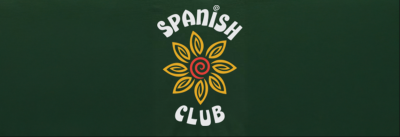By Emily Rotthaler– As a high school or college student there are some topics that teachers go over so often that you begin to know them by heart. One such topic is how to find a credible source and how to detect and avoid misinformation.
I would argue that every Morningside student has at least once gotten the rundown on how to detect a credible source of information. Nevertheless, there seems to be an awful lot of confusion around which sources are, in fact, credible.
As much as we could not live without the internet, it is unfortunately one of the main reasons causing that issue. Everybody and their mother can write their opinion, nobody is there to fact-check, and, as a result, the online space is cluttered with so much information – good and bad – that it is hard to see through false one.
The chaos of online information is reinforced by political division. Ex-president Trump and his administration, for example, exploited the situation and decided through the use of terms such as ‘fake news’ that some news sources are just plainly wrong.
And this is by far not limited to the United States. In Austria, for example, where anger about pandemic measures, government wrongdoings, and immigration policies is boiling higher and higher, many people trust news sources that a teacher would never dream of describing as credible. One such source of information, for example, is kla.tv, a news outlet that was established by Ivo Sasek, the founder of a Swiss cult and uses a lot of emotional and conspiring language in their reports.
But if educators preach so often about credible sources, why do so many people continue to label either all media as biased or only the media that fits their beliefs as unbiased?
To me, it feels like people are too lazy to put in the work that is required for finding a credible source or just plainly don’t want to hear or read anything that doesn’t support their opinions. It is undoubtedly more comfortable not to think too deeply about negative things and just follow whichever opinion is around.
However, as a result of this behavior, debates have become black and white, and it is increasingly difficult to develop a neutral and objective opinion. Furthermore, all kinds of media outlets are now often collectively referred to as “the biased and sensationalized media” – no matter how diverse their reporting might be.
What needs to be considered is that, just how not all people are the way described above, not all media have the malicious intent to confuse the world with sensationalized misinformation.
I understand that some people might be occupied with more pressing issues than credible information sources like figuring out how to pay their next bill. However, that doesn’t mean that the rest of us can’t think twice about what to believe or not to believe.
In my opinion, we need to start being more active in the selection of our sources again. We also need to realize that there is not always one correct opinion and make space for an objective gray area that functions like a pro and contra list for all sides of a discussion.
What might also need to happen is a reimagination of the way educators explain what a credible source is. Seeing as how many people struggle with media sources, it might not be wrong to spend more time in classes on the topic.
Mass Communication professor Dave Madsen teaches about media literacy and credible news sources in his class ‘Introduction to Mass Communication’.
In his experience, students often struggle with distinguishing between sources that comment on a topic with their opinion and actual journalistic reports that are objective, analytical, and researched.
According to him, part of the issue is that people tend to share and repost things they see on the internet without thinking about who the source is and why anybody should listen to the information the source has to offer.
“It’s easy to do a Google search and say give me lots of information about XYZ and then just use that information without thinking about who wrote it,” Madsen said and added, “If more people would stop for a minute and think before they did that, I think it would have helped a whole lot over the last couple of years.”
In general, to better identify credible sources and information, Madsen advises to “dig a little deeper” to find out whether the person writing the information has the necessary expertise to accurately report on the topic. Further, it is important to take articles containing opinion exactly as what they are and not let them influence one’s own opinion too much.
In the end, a way to go for educating students on credible information sources could be to include a small media literacy part in every class that requires research for projects. It would definitely not hurt spending some more time on reiterating the importance and identification of credible sources.








Leave a Reply